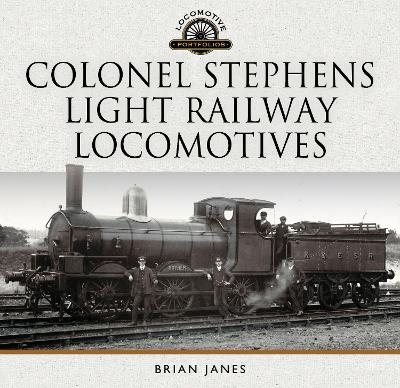
Colonel Stephens Light Railway Locomotives
Seiten
2023
Pen & Sword Transport (Verlag)
978-1-3990-2343-6 (ISBN)
Pen & Sword Transport (Verlag)
978-1-3990-2343-6 (ISBN)
Colonel Stephens ran independent railways on a shoestring, assembling a rich variety of locomotives to run his lines, some built to his designs. Set out in this book, for the first time, the how and why he achieved this across his whole 'empire'.
Holman Fred Stephens (1868-1931) set himself up in the 1890s as an engineer and manager of the complete light railway as evolved by Victorian theorists to serve rural districts as yet bereft of the benefit of cheaper transport. To them, a light railway was not an assemblage of second-hand mainline equipment of dubious merit but of fit for purpose, new material. This ideal theory did not survive the near universal inability to raise sufficient capital to build and equip a light railway that would give a reasonable profit. Recourse was therefore made to the second-hand market.
Stephens became a master at the art of building and running railways with the minimum of capital. The history of the mechanical performance of his railways was also nearly always handicapped with inadequate engineering facilities. This left staff struggling, often surprisingly successfully, with a menagerie of locomotive types.
Limited standardisation was practised but most often expediency ruled. This gave rise to a glorious kaleidoscope of locomotives the history of each of which is outlined This variety was further coloured by Stephens generally regarding a locomotive name as far more important than its number.
Holman Fred Stephens (1868-1931) set himself up in the 1890s as an engineer and manager of the complete light railway as evolved by Victorian theorists to serve rural districts as yet bereft of the benefit of cheaper transport. To them, a light railway was not an assemblage of second-hand mainline equipment of dubious merit but of fit for purpose, new material. This ideal theory did not survive the near universal inability to raise sufficient capital to build and equip a light railway that would give a reasonable profit. Recourse was therefore made to the second-hand market.
Stephens became a master at the art of building and running railways with the minimum of capital. The history of the mechanical performance of his railways was also nearly always handicapped with inadequate engineering facilities. This left staff struggling, often surprisingly successfully, with a menagerie of locomotive types.
Limited standardisation was practised but most often expediency ruled. This gave rise to a glorious kaleidoscope of locomotives the history of each of which is outlined This variety was further coloured by Stephens generally regarding a locomotive name as far more important than its number.
Brian Janes is the Curator of the Colonel Stephens Railway Museum at Tenterden with which he has been closely associated for over twenty years. A Kent born resident he has family associations with Stephens' Kent & East Sussex Railway and served as a director of that railway for many years after he retired as a Whitehall Civil Servant. He is a leading historian of Colonel Stephens nationwide collection of railways.
| Erscheinungsdatum | 14.09.2023 |
|---|---|
| Reihe/Serie | Locomotive Portfolio |
| Zusatzinfo | 250 mono illustrations |
| Verlagsort | Barnsley |
| Sprache | englisch |
| Maße | 250 x 240 mm |
| Themenwelt | Natur / Technik ► Fahrzeuge / Flugzeuge / Schiffe ► Schienenfahrzeuge |
| ISBN-10 | 1-3990-2343-8 / 1399023438 |
| ISBN-13 | 978-1-3990-2343-6 / 9781399023436 |
| Zustand | Neuware |
| Haben Sie eine Frage zum Produkt? |
Mehr entdecken
aus dem Bereich
aus dem Bereich
die Rhätische Bahn schreibt Geschichte
Buch | Hardcover (2023)
Edition Somedia (Verlag)
CHF 63,90
St. Moritz – Zermatt : die Traumreise im langsamsten Schnellzug der …
Buch | Hardcover (2023)
Verlag Berg & Tal
CHF 25,90
Betriebsmaschinendienst, Einsatz bei den Bahnbetriebswerken und …
Buch | Hardcover (2024)
EK-Verlag
CHF 68,90


